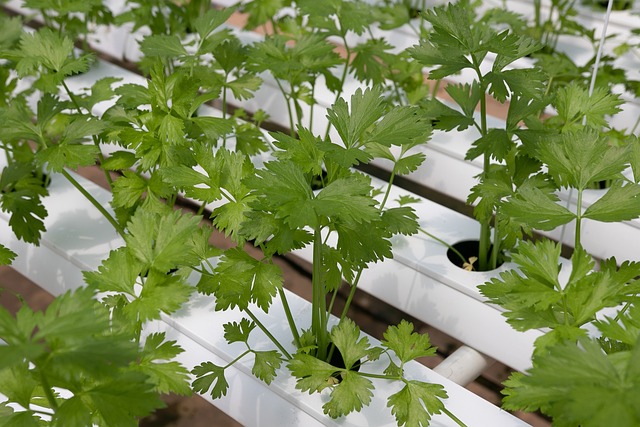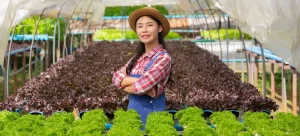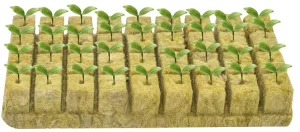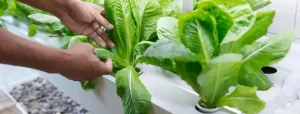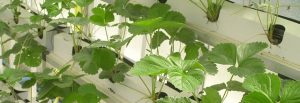Commercial Hydroponic Gardening 2023

Table of Contents
In recent years, hydroponics gardening has become an increasingly popular way to grow plants in commercial settings.
Instead of relying on traditional soil-based farming methods, hydroponics gardening involves growing plants in nutrient-rich water solutions, which can lead to faster growth rates, higher yields, and reduced water usage.
For commercial hydroponic gardening, hydroponics gardening offers a number of benefits, including the ability to grow crops year-round, produce a greater volume of high-quality produce, and maximize profits by selling directly to consumers.
In this blog post, we’ll explore the basics of commercial hydroponics gardening, including how to set up a system, maintain optimal growing conditions, and maximize your yields.
Whether you’re a seasoned gardener or a new commercial grower, this guide will provide you with the knowledge and resources you need to get started with hydroponics gardening.
The Basics of Commercial Hydroponics Gardening
- Hydroponic Systems: Commercial hydroponic gardening involves growing plants in nutrient-rich water solutions, without the use of soil.
There are several types of hydroponic systems, including deep water culture, nutrient film technique, drip irrigation, and more.
Each system has its own advantages and disadvantages, and choosing the right one depends on factors such as the type of crop, available space, and budget. - Nutrient Management: Plants grown hydroponically rely on nutrient solutions to provide them with essential nutrients.
Nutrient management is critical for commercial hydroponic gardening, as it can impact plant growth and yield. Maintaining proper pH levels and nutrient balance is essential for optimal plant health. - Lighting: Lighting is an important factor in hydroponic gardening, as plants need adequate light to grow.
In commercial hydroponic gardening, growers often use artificial lighting systems, such as high-intensity discharge (HID) lamps or light-emitting diodes (LEDs), to provide plants with the light they need. - Temperature and Humidity Control: Maintaining optimal temperature and humidity levels is crucial for commercial hydroponic gardening.
The ideal temperature range for most plants is between 65-80°F (18-27°C). Humidity levels should be kept between 50-70% to prevent the growth of mold and mildew. - Pest Management: Pest management is important in commercial hydroponic gardening, as pests can quickly spread and damage crops.
Integrated pest management (IPM) techniques, such as using beneficial insects, sticky traps, and regular inspections, can help prevent pest outbreaks.
A deeper dive into the commercial hydroponics
Traditional agriculture relies on soil as a growing medium, while hydroponic agriculture uses nutrient-rich water solutions.
Hydroponic agriculture is more water and space-efficient, and offers improved pest and disease management.
Nutrients are added directly to the water solution, which can result in faster growth and higher yields.
However, hydroponic agriculture requires higher initial investments and often requires the use of artificial lighting, which can increase energy usage.
Overall, hydroponic agriculture offers several advantages over traditional agriculture, but both methods remain viable options depending on the specific needs and resources of growers. And if you want to go commercial with hydroponics keep in your mind the following:
- Yield: Hydroponic gardening can produce significantly higher yields compared to traditional soil-based methods.
Depending on the crop and the system used, hydroponics can produce 2-10 times the yield of soil-based agriculture.
For example, lettuce can produce up to 30-40 heads per square foot in hydroponic systems, compared to 4-6 heads per square foot in soil-based systems. - Water Usage: Hydroponic gardening is highly efficient in terms of water usage, as it recirculates water and nutrients to the plants.
Compared to traditional soil-based agriculture, hydroponic systems can use up to 90% less water. For example, a hydroponic tomato crop uses only 4-5 gallons of water per pound of tomatoes, compared to 20 gallons per pound in soil-based agriculture. - Space: Hydroponic gardening is highly space-efficient, making it ideal for commercial use in urban areas or in areas where land is scarce. Hydroponic systems can be stacked vertically to maximize space, allowing for greater yields per square foot.
- Energy Usage: Artificial lighting is often used in commercial hydroponic gardening to provide plants with the light they need. While this can increase energy usage, modern lighting systems such as LEDs are highly efficient and can significantly reduce energy costs compared to older lighting systems.
- Startup Costs: The initial cost of setting up a commercial hydroponic system can vary depending on the type of system and the size of the operation.
However, overall, hydroponic systems can be more expensive to set up compared to traditional soil-based systems.
The costs of equipment, lighting, nutrient solutions, and other supplies can add up quickly, but many growers find that the increased yields and efficiency of hydroponic gardening make it a worthwhile investment.
Initial investment for commercial hydroponics compared to traditional farming
The required initial investment for a commercial hydroponic system can vary depending on the size and type of the system, as well as the crops being grown.
However, in general, hydroponic systems can be more expensive to set up compared to traditional soil-based systems.
Hydroponic systems require specialized equipment such as pumps, pipes, tanks, grow lights, and nutrient solutions.
The cost of these components can add up quickly, and the cost per square foot of a hydroponic system is typically higher than that of a soil-based system. Additionally, hydroponic systems require ongoing maintenance, which can also add to the initial investment.
On the other hand, traditional farms rely on natural soil, sunlight, and water, which can be more readily available and less expensive. However, traditional farms may require more land and labor to produce similar yields compared to hydroponic systems.
Overall, the required initial investment for a commercial hydroponic system can be higher compared to a traditional farm, but many growers find that the increased yields and efficiency of hydroponic farming make it a worthwhile investment in the long run.
BrightFarms, a company that specializes in growing leafy greens and herbs hydroponically in greenhouses. They use a recirculating hydroponic system that allows them to grow crops year-round, regardless of weather conditions.
BrightFarms found that their hydroponic system is significantly more water-efficient compared to traditional farming methods, using up to 80% less water than soil-based systems.
They also found that their hydroponic system yields 10 times more crops per acre compared to traditional soil-based farming methods.
Despite the higher initial investment required to set up their hydroponic system, BrightFarms has been able to expand their operations and secure partnerships with major retailers such as Walmart and Kroger, due in part to the consistent quality and year-round availability of their crops. This is just one example of how hydroponic farming can be a profitable and sustainable option for commercial growers.
Setting Up a Commercial Hydroponics System
- Determine your goals and budget: Before starting any project, it’s important to determine your goals and budget. Determine the size of your operation, the crops you want to grow, and the yield you’re aiming for. This will help you determine the type of hydroponic system that’s best suited for your needs and budget.
- Choose a location: Hydroponic systems can be set up in a greenhouse, warehouse, or other indoor location. Consider factors such as access to water and electricity, climate control, and ventilation when choosing a location.
- Design your hydroponic system: There are several types of hydroponic systems, including deep water culture, nutrient film technique, drip irrigation, and more. Choose a system that’s best suited for your needs and budget, and design the layout of your system.
- Purchase equipment and supplies: Purchase equipment such as pumps, pipes, tanks, grow lights, and nutrient solutions. You’ll also need to purchase growing containers, growing medium, and seeds or seedlings.
- Install and test your system: Install your hydroponic system and test it to ensure that it’s functioning properly. Make adjustments as needed.
- Monitor and maintain your system: Hydroponic systems require ongoing maintenance, including regular monitoring of pH levels, nutrient levels, and water temperature. Ensure that your system is properly maintained to maximize crop yield and quality.
- Harvest and sell your crops: Once your crops are ready, harvest them and sell them to your target market. Consider partnering with local restaurants or grocery stores to sell your crops.
How can maximize yields of my commercial hydroponic system
- Proper lighting: Ensure that your plants are receiving the right amount and quality of light for their growth stage. Use high-quality grow lights that are designed for hydroponic systems and adjust the light duration and intensity as needed.
- Nutrient balance: Maintain the proper nutrient balance in your system by regularly testing the pH, for example: Most plants grow best in a pH range between 5.5 and 6.5. However, some plants, such as strawberries, prefer a slightly more acidic pH of around 5.0 to 5.5, while others, such as lettuce, prefer a slightly more alkaline pH of around 6.0 to 7.0.
This will ensure that your plants have the right balance of nutrients for healthy growth and maximum yields. - Temperature and humidity control: Keep the temperature and humidity levels within the optimal range for your plants. This will help to prevent stress and disease, and promote healthy growth.
- Proper pruning and training: Prune your plants regularly to remove dead or damaged leaves, and to promote healthy growth. Train your plants to grow in the desired shape and direction to maximize light exposure and air circulation.
- Pest and disease management: Prevent and manage pests and diseases by regularly monitoring your plants and using natural or chemical control methods as needed.
- Crop selection and rotation: Choose crops that are well-suited for hydroponic systems and rotate your crops regularly to prevent nutrient depletion and disease buildup.
- Ongoing system maintenance: Regularly clean and maintain your hydroponic system to prevent clogs, leaks, and other issues that can affect plant growth and yield.
Conclusion
In conclusion, commercial hydroponic gardening offers many benefits over traditional agriculture, including higher yields, greater space and water efficiency, and improved pest and disease management.
Setting up a successful hydroponic system requires careful planning, design, and ongoing maintenance, but by implementing the right strategies, growers can achieve maximum yields and a successful harvest.
Some key strategies for maximizing yields include proper lighting, nutrient balance, temperature and humidity control, pruning and training, pest and disease management, crop selection and rotation, and ongoing system maintenance.
By following these guidelines, growers can take advantage of the many benefits that hydroponic gardening offers and succeed in their commercial operations.
The BrightFarms hydroponic greenhouse in Pennsylvania is a good example of a successful commercial hydroponics.
The greenhouse produces a variety of leafy greens and herbs using a closed-loop hydroponic system.
By using sustainable, space-efficient growing methods, BrightFarms is able to supply fresh produce to retailers year-round while using 80% less water and 90% less land than traditional farming methods. This case study serves as an excellent example of the benefits of commercial hydroponic gardening and highlights the potential for sustainable, high-yield food production. (Reference: https://www.brightfarms.com/)

